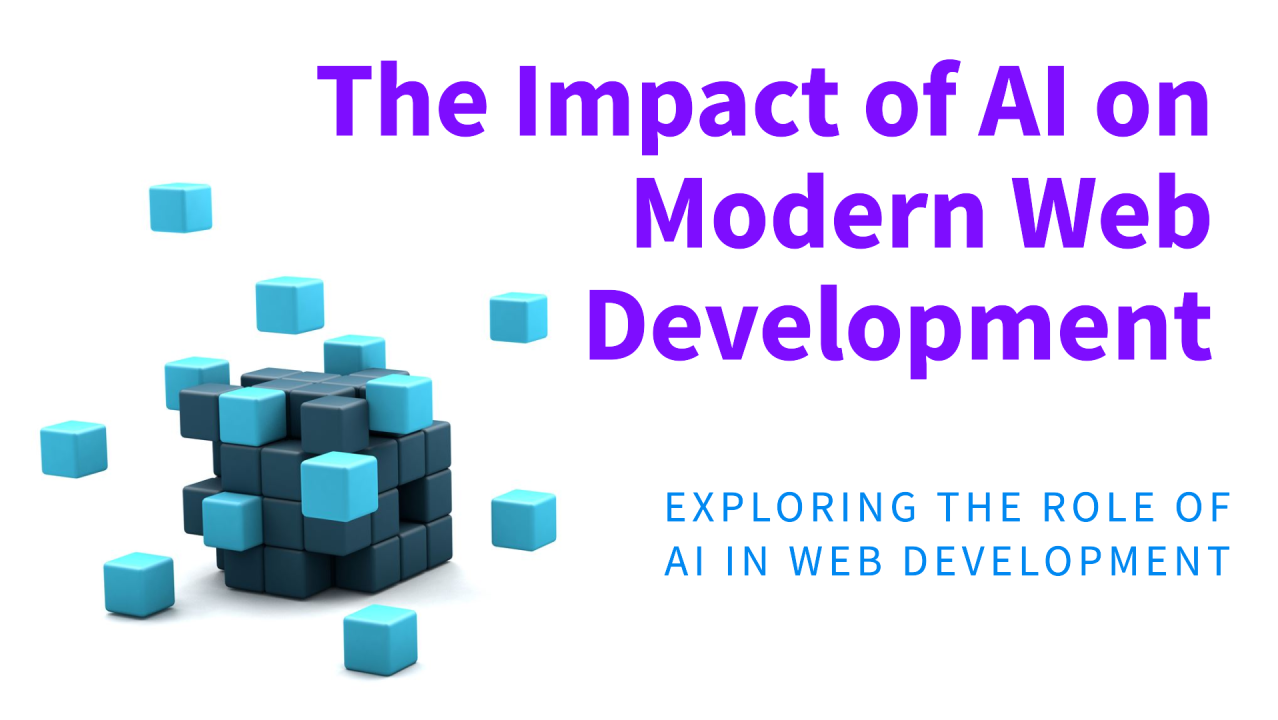Artificial Intelligence in Modern Web Development, In the fast-paced world of web development, staying ahead of the curve requires embracing cutting-edge technologies. One such technology that is revolutionizing the industry is Artificial Intelligence (AI). AI is no longer a futuristic concept—it’s here, and it’s transforming how websites are designed, developed, and optimized. From automating repetitive tasks to delivering personalized user experiences, AI is becoming an indispensable tool for modern web developers.
As we move further into 2025, the role of AI in web development continues to grow, offering new possibilities for efficiency, creativity, and user engagement. In this article, we’ll explore how AI is shaping modern web development, its key applications, and why businesses should embrace this technology.
What is Artificial Intelligence (AI)?
Artificial Intelligence (AI) refers to the simulation of human intelligence in machines that are programmed to think, learn, and make decisions. In the context of web development, AI technologies like machine learning, natural language processing (NLP), and computer vision are being used to automate processes, analyze data, and enhance user experiences.
How AI is Transforming Web Development
1. Automated Web Design
AI-powered tools like Wix ADI and Bookmark’s AIDA are making it easier for businesses to create websites without extensive coding knowledge. These tools use AI to analyze user preferences and generate custom designs in minutes.
- Benefits: Saves time, reduces costs, and allows non-developers to create professional websites.
- Example: A small business owner can use an AI tool to design a responsive, visually appealing website without hiring a developer.
2. Personalized User Experiences
AI enables websites to deliver personalized experiences based on user behavior, preferences, and demographics. For example, e-commerce sites can use AI to recommend products, display dynamic content, and tailor the user journey.
- Benefits: Increases engagement, improves user satisfaction, and boosts conversion rates.
- Example: Netflix uses AI to recommend shows and movies based on a user’s viewing history.
3. Chatbots and Virtual Assistants
AI-powered chatbots and virtual assistants are becoming a standard feature on websites. These tools can handle customer inquiries, provide support, and even process transactions.
- Benefits: Reduces response times, improves customer service, and operates 24/7.
- Example: A travel website can use a chatbot to help users book flights, check itineraries, and answer FAQs.
4. Enhanced Security
AI is being used to improve website security by detecting and preventing threats like malware, DDoS attacks, and fraudulent transactions. AI algorithms can analyze patterns and identify anomalies in real-time.
- Benefits: Protects sensitive data, builds customer trust, and ensures compliance with regulations.
- Example: An e-commerce site can use AI to detect and block suspicious login attempts.
5. Content Generation
AI tools like GPT-4 and Jasper are being used to generate content for websites, including blog posts, product descriptions, and social media updates.
- Benefits: Saves time, ensures consistency, and scales content production.
- Example: A news website can use AI to generate summaries of breaking news stories.
6. Predictive Analytics
AI-powered predictive analytics helps businesses forecast trends, customer behavior, and campaign performance. By analyzing historical data, AI can identify patterns and make data-driven recommendations.
- Benefits: Improves decision-making, optimizes marketing strategies, and increases ROI.
- Example: A retail brand can use AI to predict which products will be popular during the holiday season.
7. Voice Search Optimization
With the rise of voice-activated devices, AI is playing a key role in voice search optimization. AI-powered tools analyze voice search queries and optimize content for natural language.
- Benefits: Improves search rankings, enhances user experience, and attracts voice search traffic.
- Example: A local restaurant can optimize its website for voice searches like “Find the best pizza near me.”
Why Businesses Should Embrace AI in Web Development
1. Stay Competitive
AI is no longer a luxury—it’s a necessity. Businesses that embrace AI can gain a competitive edge by improving efficiency, enhancing customer experiences, and making data-driven decisions.
2. Improve Efficiency
AI automates repetitive tasks, freeing up time for businesses to focus on strategic initiatives. This leads to increased productivity and cost savings.
3. Enhance Customer Experiences
AI enables businesses to deliver personalized, seamless experiences that build customer loyalty and drive conversions.
4. Make Data-Driven Decisions
AI provides actionable insights by analyzing vast amounts of data. This helps businesses make informed decisions and optimize their strategies.
Challenges of Implementing AI in Web Development
While AI offers numerous benefits, it also comes with challenges, such as:
- High Costs: Implementing AI technologies can be expensive, especially for small businesses.
- Data Privacy: Businesses must ensure they comply with data privacy regulations when using AI.
- Skill Gap: There is a shortage of professionals with AI expertise, making it difficult for businesses to implement and manage AI solutions.

How to Get Started with AI in Web Development
1. Define Your Goals
What do you want to achieve with AI? Common goals include improving user experience, automating tasks, and enhancing security.
2. Choose the Right Tools
Select AI tools and platforms that align with your goals. Popular options include:
- Google AI: Offers a range of AI tools and APIs for web development.
- IBM Watson: Provides AI solutions for natural language processing, machine learning, and more.
- Microsoft Azure AI: A comprehensive platform for building AI-powered applications.
3. Develop and Test
Work with your development team to build and test AI-powered features. Key steps include:
- Data Collection: Gather and analyze data to train your AI models.
- Model Training: Use machine learning algorithms to train your models.
- Testing: Thoroughly test your AI features to ensure they work as expected.
4. Monitor and Optimize
Once your AI features are live, monitor their performance and make adjustments as needed. Use analytics tools to track key metrics and identify areas for improvement Artificial Intelligence in Modern Web Development.
Real-World Examples of AI in Web Development
1. Netflix
Netflix uses AI to recommend shows and movies based on a user’s viewing history, improving user engagement and satisfaction.
2. Amazon
Amazon’s AI-powered recommendation engine suggests products based on user behavior, driving higher sales and customer loyalty.
3. Spotify
Spotify uses AI to create personalized playlists and recommend music, enhancing the user experience and increasing engagement.
Read More: The Role of Cybersecurity in Modern Web Development
Conclusion
Artificial Intelligence in Modern Web Development by offering new possibilities for efficiency, creativity, and user engagement. From automated web design and personalized experiences to enhanced security and predictive analytics, AI is reshaping how websites are built and used.
As we move further into 2025, the adoption of AI in web development is expected to grow, creating new opportunities for innovation and efficiency. By embracing AI, businesses can stay ahead of the competition, deliver exceptional user experiences, and achieve their business goals.
High-Authority External Links:
- Google AI Blog – A resource for the latest updates on AI technologies and applications.
- IBM Watson Documentation – A guide to understanding and implementing AI solutions with IBM Watson.





